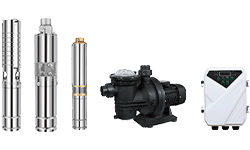Solar plan for Indian computers
Nearly 80% of houses are estimated to have no power, and many villages suffer frequent disruption in supply because of power cuts or other faults.
Many have to use kerosene lamps for light and most government-run primary schools have no power at all.
It is hoped the plan will help schools cope with the rural power crisis.
Last year, the Uttar Pradesh Education for All Project Board bought about 1,000 computers for selected primary schools in all 70 districts.
The schools were selected in villages which had no power lines, and teachers were given special training for computer-aided education.
A further 1,000 computers are to be purchased this year for village schools, but most of these will not work because there is no power available.
"In the present situation of power supply we are not sure that electricity will be available in rural schools for computers," said GB Patnaik from the Alternative Energy Department.
"To overcome this, we have drawn a scheme to arrange solar energy for these computers."
The cost of running solar panels to power computers in one school would cost about £1,000, which is expensive for many schools.
But Parth Sarthi Sen Sharma, director for the Education for All project, said funds would be arranged on a 50-50 basis by both departments.
Mr Sharma said the expenditure will be cost effective in the long run.
Innovative uses
As authorities in the education and alternative energy departments try to arrange funds, some farmers who have solar pumps for irrigation are making efforts to use this natural and clean energy source for other purposes.
So far, solar energy has been used for cooking, heating water, light and running tube wells.
Gyaneshwar Varma, who lives in the village of Tikara Patti nearly 50km east of the state capital Lucknow, bought a computer 15 years ago, primarily to play card and chess games.
Later he purchased another computer for his school, but it had no electricity supply.
He had to take his children into the village to learn about computers, but the power supply in the village was also very erratic and there was no fixed schedule for power.
Mr Varma, a civil engineer by training, installed a solar pump in his school campus to irrigate his farms.
Now he wants to convert the solar energy into 220-volt AC electricity, and has hired a mechanic from the industrial city Kanpur to make a power inverter for $124 (£70).
"When my solar AC converter is ready it will be very convenient. I will run computers as well as fans in my school," said Mr Varma.
Government regulations say solar pumps should be used for irrigation purposes only. But other farmers and youths are inventing all kinds of new uses of solar energy, generating employment and additional income.
One Umari villager in the Barabanki district is charging batteries to run TVs in rural areas, which gives him an extra income of $3.50 (£2) a day.
Farmer Sharmail Singh has dug a pond near his solar pump in his farmhouse, which is used for fisheries and drinking water for buffalos. Solar pumps provide light in the night via a battery.
"It is almost a power house," commented his son Ranjit Singh.
The state of Uttar Pradesh currently has 2.7 million diesel engine tube wells and 600,000 electric motor tube wells.
Last year 109 solar pumps were installed, but the administration now aims to install 400 in 2004.
Farmers only have to pay a fourth of the cost and the rest is subsidised by the government. Banks are also lending farmers the money they need to pay out.
And if Mr Varma succeeds in developing the technology to run fans and computers from solar pumps it may encourage other farmers to do the same, giving them a more reliable and cleaner source of power.























